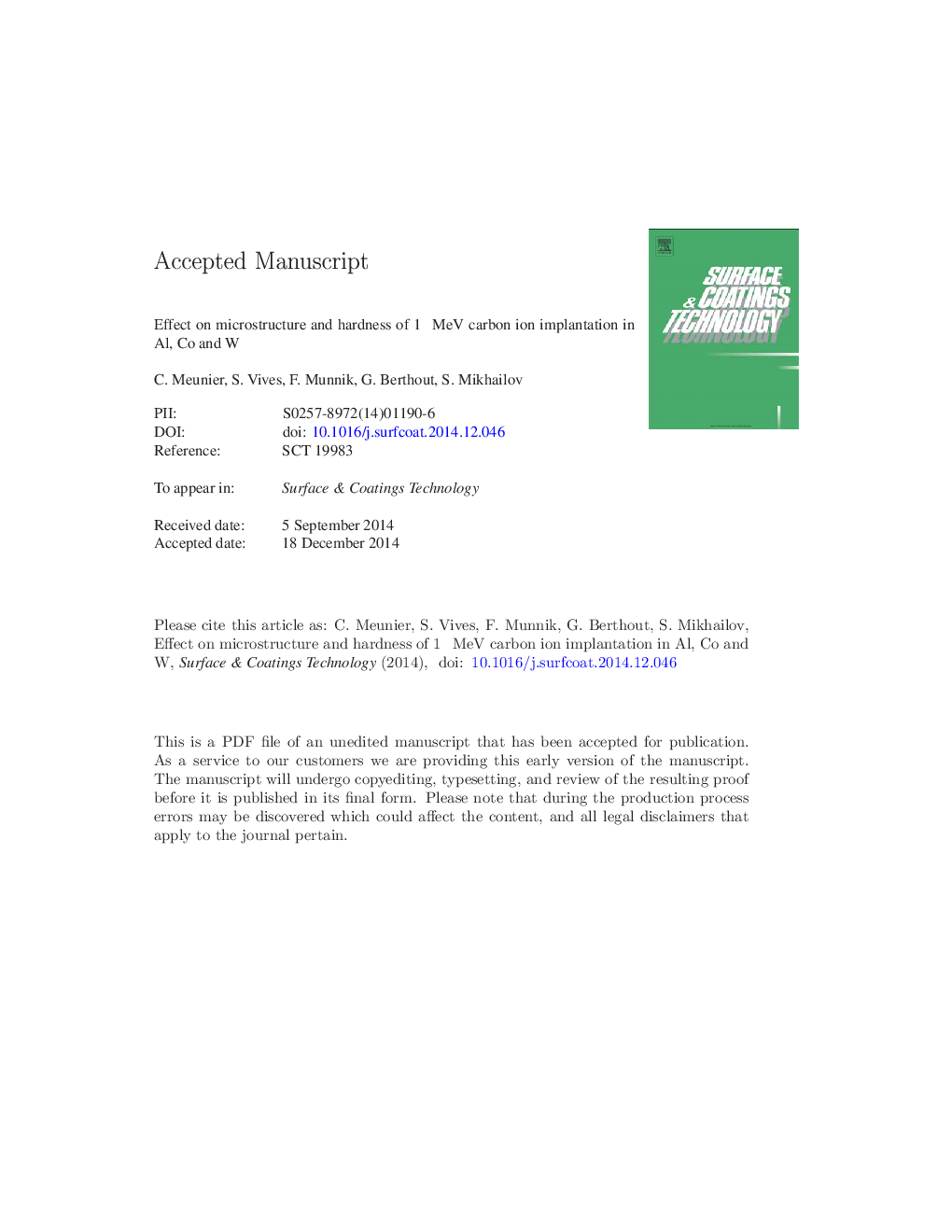| Article ID | Journal | Published Year | Pages | File Type |
|---|---|---|---|---|
| 1657211 | Surface and Coatings Technology | 2015 | 47 Pages |
Abstract
Carbon implantation is used to change the surface properties of materials without changing the bulk properties in various fields such as microelectronics, optics, tribology and biomaterials. While this implantation is usually performed at energies lower than 200Â keV and thus in the low energy range of the stopping power curve, here we studied the effect of a 1Â MeV ion beam which is in the medium energy range. The higher energies increase the modified depth range and thereby the load-carrying ability of metal surfaces. Light (Al), medium (Co) and heavy (W) metals were chosen as substrates. Three ion fluencies of 1016 ions/cm2, 1017 ions/cm2, and 1018 ions/cm2 were used. Nuclear reaction analysis evidenced the presence of carbon at the samples surface and at a depth in accordance with Monte-Carlo (SRIM) simulations. Glancing incidence X-ray diffraction (GIXRD) allowed us to reveal the formation of aluminum carbide while no carbide was observed for Co and W. The modifications of the lattice parameters of Co and of W were studied by Rietveld refinements of X-ray diffraction patterns. For these metals the increase of the profile asymmetry of the diffraction peaks can result from the generation of dislocations induced by irradiation. The hardness measured by nano-indentation tests increases with the carbon ion dose, and the rise of hardness is larger for aluminum and tungsten than for cobalt.
Related Topics
Physical Sciences and Engineering
Materials Science
Nanotechnology
Authors
C. Meunier, S. Vives, F. Munnik, G. Berthout, S. Mikhailov,
